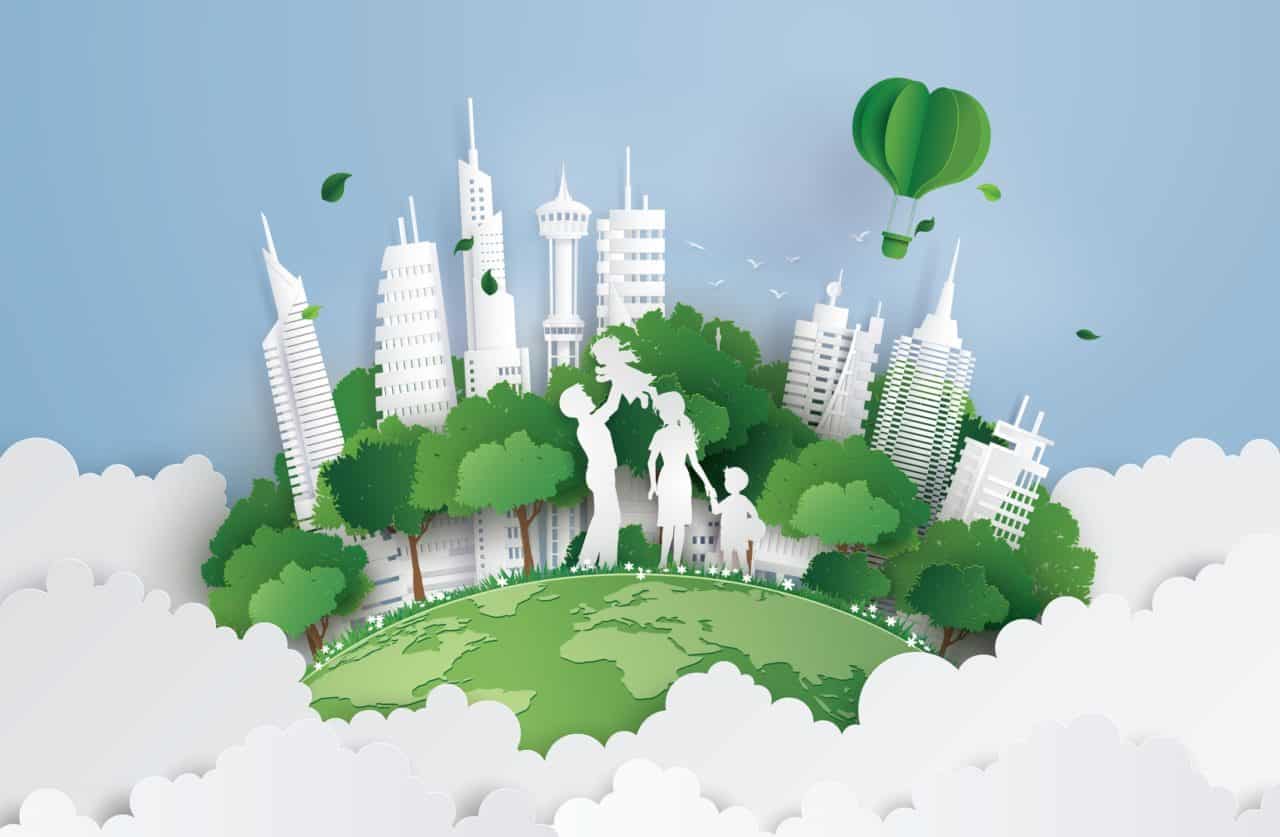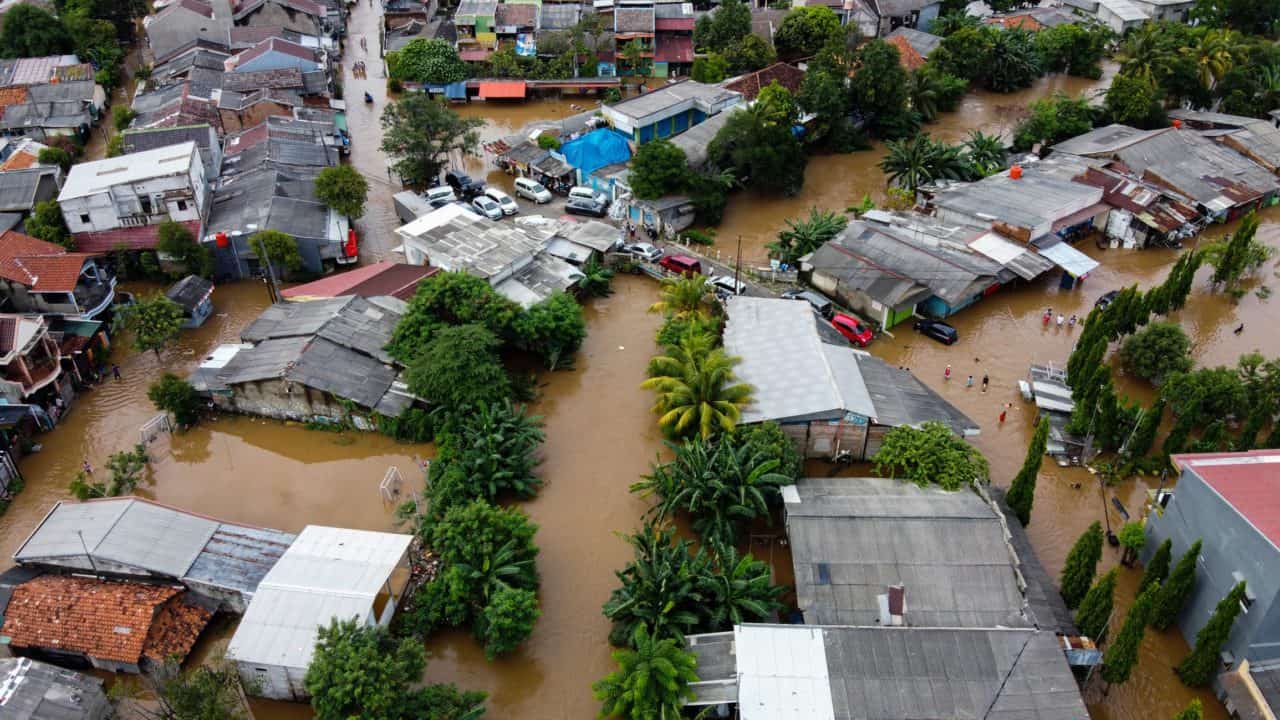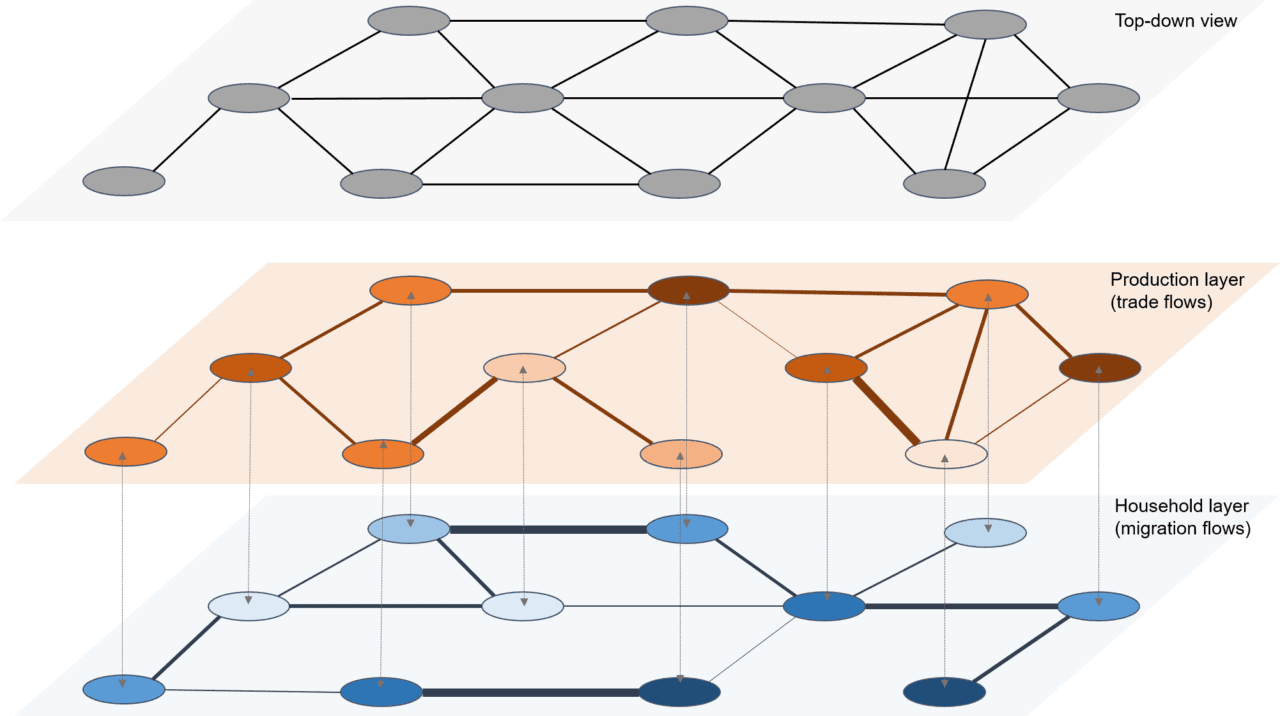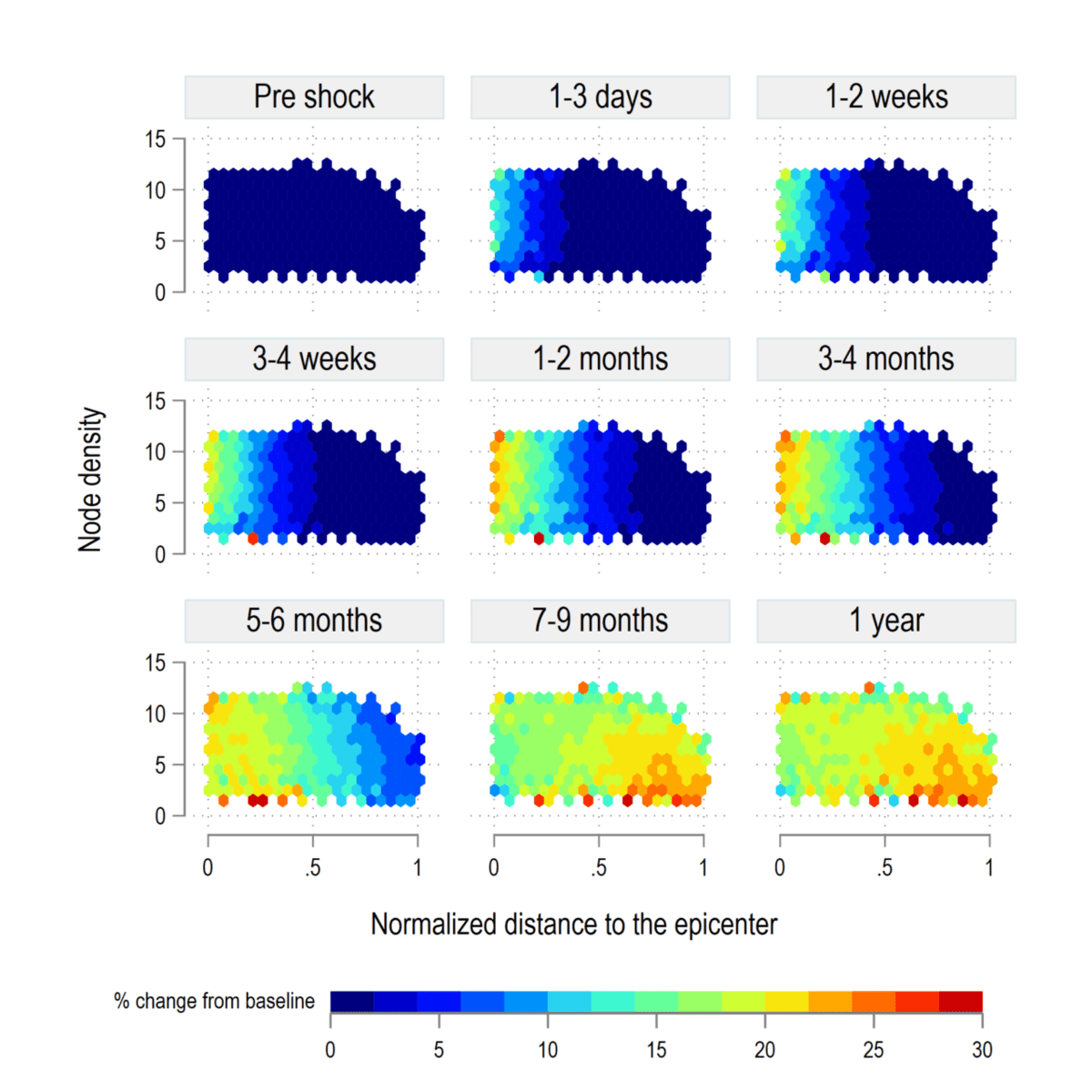Jan 13, 2022 | Austria, Climate Change, COVID19, Energy & Climate, Sustainable Development
By Thomas Schinko, IIASA Equity and Justice Research Group Leader in the Population and Just Societies Program
IIASA researcher Thomas Schinko discusses the visionless outcomes of the recent UN Climate Conference (COP26) in Glasgow and an Austrian project he is involved in, which aims to co-create courageous and positive visions for a low-carbon and climate resilient future.

© Kengmerry | Dreamstime.com
In December 2015, the international community agreed to limit global average temperature increase to “well below 2°C” above pre-industrial levels and to pursue efforts to hold them to 1.5°C under a landmark agreement known as the Paris Climate Accord. At COP26, which many considered the real follow-up to Paris, nations were asked to present updated plans and procedures to deliver in Glasgow what Paris promised.
While this ambitious goal was not achieved with the Glasgow Climate Pact and many delegates speaking in the closing plenary expressed disappointment, COP26 President Alok Sharma said that at least it “charts a course for the world to deliver on the promises made in Paris”, and parties “have kept 1.5°C alive”. However, parties substantially differ in their views around whether COP26 actually kept the 1.5°C target within reach.
In the time between Paris and Glasgow, we have seen the climate crisis unfolding in almost all parts of the world, with record heatwaves, storms, heavy rains, floods, droughts, wildfires, rising sea levels, and melting glaciers, to name but a few. At the same time, and notwithstanding many nations’ existing mitigation pledges, global greenhouse gas (GHG) emissions are still on the rise, and despite the small temporary dent to the upward sloping curve induced by COVID-19 pandemic related impacts on the world economy, there is no turning point in sight. While more and more nations are setting net-zero targets towards the middle of the century – most recently India announced reaching net-zero at COP 26, although only by 2070 – there is still a lack of intermediate steps, concrete measures, and financing strategies around how to achieve those targets.
What we need to achieve climate neutrality by mid-century and thereby stand a decent chance of preventing the worst effects of the climate crisis, is an immediate and drastic U-turn in the global GHG emission trajectory, rather than slowly reaching a turning point. The cuts required per year to meet the projected emissions levels for 2°C and 1.5°C are now 2.7% and 7.6% respectively, from 2020 and per year on average. This in turn requires sudden and drastic climate action at different policy and governance levels, rather than some incremental policy and behavioral changes.
However, many policy- and decision makers, as well as other societal stakeholders, consider such radical change impossible. I am positive we have all heard many excuses for slow progress in climate action, including that people won’t tolerate any climate policy measures that would require a palpable change in their lifestyles, habits, and routines; or that there is no money after carrying our economies through the economic crisis induced by the COVID-19 pandemic. Other favorites are that “there is no alternative to our growth-based economic model”; or “our industries cannot just change their business models from one day to another”.
Overall, such excuses are blatant manifestations of a more general observation: At the heart of political failure there is often a lack of imagination or vision. One might argue that the policy responses to the COVID-19 pandemic have shown that governments are able to actually govern, and people were ready to profoundly change their behaviors. However, the overarching policy narrative was suggesting that these changes are all temporary and that once the pandemic is under control, we will move back to the pre-crisis state. In the context of the climate crisis and other closely related grand global challenges such as the biodiversity crisis, a “back to the future” narrative is at least useless and in the worst case even counterproductive.
To operationalize the Paris Agreement’s 1.5°C goal and the follow-up Glasgow Climate Pact, we need courageous forward-looking visions that go beyond technology scenarios by describing what a climate neutral and resilient society could look like in all its complex facets. Last minute interventions at COP26 to tone down the Pact’s wording on fossil fuels to “phasing down” unabated coal power and “phasing out” inefficient fossil fuel subsidies, have proven once more that international climate policymaking is a tough diplomatic struggle, but also that it still suffers from a chronic lack of imagination at all levels.
Also at the individual level, recent research has found that while citizens are alarmed by the climate crisis, few are willing to act proportionately as they lack a clear vision of what a low-carbon transformation actually means. If we are not able to develop courageous visions of low-carbon and climate resilient futures that generate broad societal buy-in, we will not be able to identify and implement radical and transformational climate actions that will catapult us onto the low-carbon trajectories that have been laid out by scientists for achieving the 1.5°C goal. Hence, these visions need to be co-created with all relevant societal stakeholders that have a legitimate claim in the low-carbon transformation of our societies.
In developing such joint visions, it is of the utmost importance to first understand and eventually negotiate between different imaginations of a livable future and perceptions of what constitutes fair outcomes of, and just process for this fundamental transformation our societies will have to undergo.
In Austria, as in many other countries, national and sub-national governments are announcing net-zero targets and starting to think about the strategies and measures needed to achieve those. With a transdisciplinary group of researchers, practitioners, and policy- and decision makers, we are developing a participatory process for Styria, one of Austria’s nine states, that aims to co-create courageous and positive visions for a low-carbon and climate resilient future with a representative group of about 50 people. The central building block of this process is a co-creation workshop called “climate modernity ̶ the 24-hour challenge”. This weekend workshop will not take up more than 24 hours in total of participants’ time and it not only aims to imagine visions, but also to back-cast from these visions what is required to achieve them.
With this process, we set out to support the development of a new, politically as well as societally feasible, climate, and energy strategy for Styria. The Klimaneuzeit website, which includes an online application form that allows for eventually inviting a representative group of participants, has just been launched. Stay tuned to find out more about our lessons learned in co-developing this visioning process and implementing this prototype in Austria.
Note: This article gives the views of the author, and not the position of the Nexus blog, nor of the International Institute for Applied Systems Analysis.
Dec 7, 2021 | Climate Change, Environment, Food & Water, Sustainable Development
By Stefan Frank, researcher in the Integrated Biosphere Futures Research Group of the IIASA Biodiversity and Natural Resources Program
Stefan Frank discusses a recent study that looked into the impacts of ambitious EU agricultural mitigation policies on the livelihoods of farmers.

© Milkos | Dreamstime.com
Balancing greenhouse gas (GHG) emissions and removals in the land-use sector by 2035 is one of the key milestones presented in the European Green Deal, but achieving climate neutrality will require further emission cuts in the agricultural sector. However, when it comes to setting ambitious mitigation targets for the sector, (national) policymakers are often reluctant to make strong commitments.
One reason could be the close interactions of agriculture with other policy objectives related to climate change mitigation, such as sustained food production, nutrition security, or biodiversity. Even though agricultural policies are frequently implemented using subsidies, such as in the European Union Common Agriculture Policy, policymakers strive to find a balance that ensures progress on these goals while at the same time not overburdening farmers.
Another fear is that ambitious mitigation efforts could cause economic losses for EU farmers whose income already relies heavily on subsidies. Reducing emissions could for instance lead to increased production costs and a consequent deterioration in the cost-competitiveness of EU farmers when comparing domestic production with imports. For example, the adoption of mitigation practices such as precision farming or anaerobic digesters increase costs, and the reduction in fertilizer application as suggested in the Farm to Fork Strategy may also directly impact crop yields and subsequently revenues.
In our study recently published in the journal Environmental Research Letters, we investigated the impacts of an ambitious EU agricultural mitigation policy on agricultural markets, farmers, and GHG emissions applying an ensemble of agricultural sector models. We investigated two alternative scenarios.
The first scenario represents a situation where only the EU adopts stringent mitigation efforts for agriculture compatible with the 1.5°C target at global scale, while the second imagines a world where other world regions also take action.

Figure from Frank et al. (2021): Average impact across models of different levels of ROW mitigation ambition on EU agricultural production, prices and production value corrected for carbon tax payments in 2050. RUM—ruminant beef, DRY—milk, NRM—non-ruminant meatand eggs, CGR—coarse grains, WHT—wheat, and OSD—oilseeds.
We found that EU beef producers are strongly affected if only the EU pursues stringent agricultural emission reduction efforts. For example, cutting EU agricultural non-CO2 emissions by close to 40% (155 MtCO2eq/yr) in 2050 could result in a 22% decline in EU beef production. Despite emission leakage effects through reallocation of production outside the EU, a unilateral mitigation policy delivers climate benefits and yields net emission savings at global scale of around 90 MtCO2eq/yr.
Once regions outside Europe start to pursue mitigation efforts that are compatible with those in the EU, economic impacts on EU farmers are distributed more equally across world regions as farmers outside the EU are included in the mitigation policy and start contributing. Since EU farmers rank among the most GHG efficient producers at global scale, with increasing mitigation efforts in other world regions, EU farmers don’t lose their competitiveness, even if the EU pursues 1.5°C compatible efforts.
Unlike in the unilateral EU policy, EU farmers could even start to benefit from a globally coordinated mitigation policy beyond a certain point. For example, if regions outside the EU were to pursue at least half the effort implemented in the EU and were required to reach the 1.5°C target globally, the economic value of production of EU beef and non-ruminant producers could exceed baseline scenario projections without any mitigation efforts in agriculture.
Similar effects are observed for other world regions with GHG-efficient agricultural production systems, while GHG intensive producers are projected to lose market shares. Given differences in GHG mitigation efficiencies and economic prospects across world regions, accompanying distributional policies such as climate finance policies could help to alleviate the risk of mitigation induced food security or poverty issues. Our study highlights these economic challenges and opportunities for farmers related to the required transition of the global food system to achieve the 1.5°C target.
Further info:
Frank, S., Havlik, P, Tabeau, A., Witzke, P., Boere, E., Bogonos, M., Deppermann, A., van Dijk, M., et al. (2021). How much multilateralism do we need? Effectiveness of unilateral agricultural mitigation efforts in the global context. Environmental Research Letters 16 (10) e104038. DOI: 10.1088/1748-9326/ac2967 [pure.iiasa.ac.at/17492]
Note: This article gives the views of the author, and not the position of the Nexus blog, nor of the International Institute for Applied Systems Analysis.
Nov 4, 2021 | Climate Change, Data and Methods, Risk and resilience
By Asjad Naqvi and Irene Monasterolo from the IIASA Advancing Systems Analysis Program
Asjad Naqvi and Irene Monasterolo discuss a framework they developed to assess how natural disasters cascade across socioeconomic systems.

© Bang Oland | Dreamstime.com
The 2021 Nobel Prize for Physics, was awarded to the topic of “complex systems”, highlighting the need for a better understanding of non-linear interactions that take place within natural and socioeconomic systems. In our paper titled “Assessing the cascading impacts of natural disasters in a multi-layer behavioral network framework”, recently published in Nature Scientific Reports, we highlight one such application of complex systems.
In this paper, we develop a framework for assessing how natural disasters, for example, earthquakes and floods, cascade across socioeconomic systems. We propose that in order to understand post-shock outcomes, an economic structure can be broken down into multiple network layers. Multi-layer networks are a relatively new methodology, mostly stemming from applications in finance after the 2008 financial crisis, which starts with the premise that nodes, or locations in our case, interact with other nodes through various network layers. For example, in our study, we highlight the role of a supply-side production layer, where the flows are trade networks, and a demand-side household layer, which provides labor, and the flows are migration flows.

Figure 1: A multi-layer network structure
In this two-layer structure, the nodes interact, not only within, but across layers as well, forming a co-evolving demand and supply structure that feeds back across each other. The interactions are derived from economic literature, which also allow us to integrate behavioral responses to distress scenarios. This, for example, includes household coping mechanisms for consumption smoothing, and firms’ response to market signals by reshuffling supply chains. The price signals drive flows, which allows the whole system to stabilize.
We applied the framework to an agriculture-dependent economy, typically found in low-income disaster-prone regions. We simulated various flood-like shock scenarios that reduce food output in one part of the network. We then tracked how this shock spreads to the rest of the network over space and time.

Figure 2: Evolution of vulnerability over time
Our results show that the transition phase is cyclical and depends on the network size, distance from the epi-center of the shock, and node density. Within this cyclical adjustment new vulnerabilities in terms of “food insecurity” can be created. Then, we introduce a new measure, the Vulnerability Rank, or VRank, to synthesize multi-layer risks into a single index.
Our framework can help inform and design policies, aimed at building resilience to disasters by accounting for direct and indirect cascading impacts. This is especially crucial for regions where the fiscal space is limited and timing of response is critical.
Reference:
Naqvi, A. & Monasterolo, I. (2021). Assessing the cascading impacts of natural disasters in a multi-layer behavioral network framework. Scientific Reports 11 e20146. [pure.iiasa.ac.at/17496]
Note: This article gives the views of the author, and not the position of the Nexus blog, nor of the International Institute for Applied Systems Analysis.
Oct 18, 2021 | Climate, Climate Change, Energy & Climate, Poverty & Equity, Women in Science, Young Scientists
By Marina Andrijevic, researcher in the IIASA Energy, Climate, and Environment Program
Marina Andrijevic tackles some inconvenient but fundamental issues around climate change adaptation.

© Lio2012 | Dreamstime.com
Anyone who followed climate-related headlines this summer would have noticed a more than usual amount of talk on climate change adaptation. As it goes with sudden epiphanies in aftermaths of humanitarian disasters in our Western realities, this time we’ve come to realize that we need to seriously think about doing some adaptation.
To be fair, the realization that adaptation is inevitable has for a long time been somewhat of a taboo in the “woke” climate policy and activist circles (the author of this blog is a millennial and would like to acknowledge that the reader’s idea of a long time in climate policy might be different). Admitting that there might be no other option but to adapt to whatever the locked-in effects of climate change are, is arguably defeatist and gives in to the notion that mitigation alone won’t cut it.
While this might be yet another depressing but accurate reflection of the reality under climate change, portraying adaptation and mitigation as different but equally urgent actions could set a dangerous trap if it produces ideas such as: if we adapt enough, perhaps our economies and energy systems won’t need to change so much.
Even if it would be enough (which it wouldn’t), adaptation will not necessarily just happen once we recognize it needs to be done, because the needs and abilities for it operate on different time horizons and geographical scales. Many parts of the world that need adaptation will not necessarily be able to take action, so we have to be very careful when we count on it as a solution to climate change.
This is where we must tackle some inconvenient but fundamental issues about adaptation. Climate change research, especially the areas positioned at the “interface” with policy, could play a crucial role here. In this role, it must be very prudent and avoid doing a disservice to decision makers, and even worse, to people affected by those decisions. In other words, the scientific assessments need to be careful when assuming for whom, where, and how adaptation can reasonably be expected.
We tried to illustrate why this matters in our recent paper that looks at the capacity of populations to adapt to heat stress. We used air-conditioning as a popular, albeit not (yet) climate-friendly adaptation option. My coauthors and I understand that air conditioning could well be maladaptation, meaning that it causes more harm than good in the long-run. Adaptation practices, however, it turns out, are quite difficult to measure, while installed air conditioners can literally be counted, which makes them handy for plugging into our statistical models. We contend with access to air conditioning currently being a good enough example of access to adaptation and promise to assess more options in the future.
Our paper shows how the capacities to protect against heat stress vary widely around the world. Like with many other unjust manifestations of climate change, people in the world’s hottest areas also have the least means to adapt. We found that countries with more income, more urban areas, and less income inequality, are also the ones where more people have access to air conditioning.
This does not come as the world’s biggest revelation, but it conveniently allows us to make informed guesses on how access to air conditioning might change in 2050 or 2100. This is possible because the research community has already engaged in a group effort to propose five different futures with regard to GDP, urbanization, and income distribution (in climate jargon: the Shared Socioeconomic Pathways or SSPs).
Coupling the potential rates of air conditioning with the people exposed to heat stress based on projections of climate models, lets us calculate the cooling gap – the difference between people exposed to heat stress and people who can protect themselves against it with the use of air conditioning.
Depending on whether we find ourselves in the best- or the worst-case scenario of socioeconomic development could mean anywhere between two billion and five billion people globally unable to protect themselves against heat stress with air conditioning in 2050. This range only grows with longer time horizons, with Sub-Saharan Africa and South Asia being the areas of the world where these differences are the starkest.
We hope that our paper will motivate further investigations of potential gaps in adaptation that point to insufficient adaptive capacity and help to identify the areas and populations most at risk, as well as what additional work needs to be done in terms of socioeconomic improvements before we can reasonably expect adaptation to take place. Our findings on the importance of factors beyond just GDP, suggest that helping communities to build their adaptive capacity doesn’t mean only throwing money at them (although that would make for a decent start!), but international efforts must focus on issues such as eradicating inequalities, supporting smart urban development, strengthening institutions, and providing education.
So, let’s not take it for granted that we will all be able to adapt either now or in the future. Eliminating the causes of climate change must remain the number one policy objective that will help to reduce the need for adaptation in the first place. But number two could be helping communities that have no option but to cope with what’s already coming at them. Highlighting in our research what the implications of different adaptive capacities are for preservation of livelihoods, is a small step towards achieving this.
Reference:
Andrijevic, M., Byers, E., Mastrucci, A., Smits, J., & Fuss, S. (2021). Future cooling gap in shared socioeconomic pathways. Environmental Research Letters 16 (9) e094053. [pure.iiasa.ac.at/17411]
Note: This article gives the views of the author, and not the position of the Nexus blog, nor of the International Institute for Applied Systems Analysis.
Aug 12, 2021 | Climate Change, Evolution, Science and Policy, Women in Science, Young Scientists
By Neema Tavakolian, 2021 IIASA Science Communication Fellow
Young Scientists Summer Program (YSSP) participant Lyndsie Wszola explores how human interactions with warming freshwater systems have affected the evolution of fish species through the lens of the North American walleye.

© Justinhoffmanoutdoors | Dreamstime.com
The effects of climate change have intensified over the past few years, especially in our oceans, and human based activities contributing to it are now being taken more seriously. While the warming of our oceans is indeed troubling, many forget that freshwater systems are also being influenced, and that this is affecting the growth and evolution of the species that reside in them.
2021 YSSP participant Lyndsie Wszola wants to explore changes in freshwater systems using human-natural modeling systems at IIASA.

© Lyndsie Wszola
Growing up with a conservation officer father, Wszola is a second-generation conservationist. Knowing she wanted to enter this field at an early age, she realized that she had to get into research and academia first. Her main interests while studying at the University of Nebraska have been the interactions between humans and wildlife.
While researching the relationships between hunters and ring-necked pheasants, she discovered an affinity for quantitative research. This curiosity went even further after she discovered literature on harvest induced evolution and mathematical ecology specifically pertaining to fish populations. Together, this initial desire to explore human and wildlife interactions and her newfound interest in mathematical ecology, led Wszola to take a closer look at North American freshwater systems and how we as humans are influencing its ecology. Her research specifically delves into the growth and evolutionary changes seen in the North American walleye (Sander vitreus) – a popular fish in Canada and the United States. The reason for its fame is its palatable taste as a freshwater fish and its status among anglers, making it both a commercially and recreationally fished species.
Walleye was chosen as the subject of Wszola’s research for many reasons. First, walleye, like many fish, are ectotherms meaning that their body processes and behaviors are directly linked to their body temperature, which is in turn directly linked to the temperature of the water. Unlike other fish however, there is already plenty of research and data on the relationship between the walleye’s growth and temperature. This information makes it much easier to simulate the walleye’s eco-evolutionary growth dynamics in the context of human driven harvests in warming waters. Wszola will also be working with very large datasets spanning multiple latitudes ranging from Ontario, Canada down to Nebraska, USA. The datasets include up to six million fish with four million of those being walleye.
“My goal is to model the influence of temperature on fish harvests based on size. Due to their ectotherm nature, we can observe the changes in body size in annual harvests. As waters warm, walleye grow much faster. We also know that intensely harvested fish often evolve to reach maturation at smaller sizes. When coupled with rising temperatures, this relationship between harvest induced and temperature induced evolution can be fascinating, as we now have two sources working together to change the growth evolution of this fish,” she explains.
Due to warming temperatures, many natural resources are at stake with some of the most sensitive being aquatic in nature. Research like this is important as it allows us to look at our relationships with the environment to be able to react accordingly.
“I hope that the research I do yields fascinating enough results so that from a practical standpoint, future fisheries policies can include climate change dynamics in addition to fish and human dynamics,” Wszola concludes.
Note: This article gives the views of the author, and not the position of the Nexus blog, nor of the International Institute for Applied Systems Analysis.
Jul 1, 2021 | Biodiversity, Climate Change, Ecosystems
By Florian Hofhansl, researcher in the Biodiversity, Ecology, and Conservation Research Group of the IIASA Biodiversity and Natural Resources Program
Florian Hofhansl writes about a successful paper on which he was the lead author that was recently ranked #32 on the list of the Top 100 most downloaded ecology papers published in 2020.
Early in 2020, one of my manuscripts titled “Climatic and edaphic controls over tropical forest diversity and vegetation carbon storage” was accepted for publication in the prestigious journal Nature Scientific Reports.
Initially, I was worried about the bad timing when I was informed that the paper would be published on 19 March – right at the onset of the COVID-19 pandemic – since it took me and my colleagues almost a decade to collect the data and publish our results on the biodiversity and functioning of tropical forest ecosystems.
 However, my worries completely disappeared when I learned that our research article had received more that 3,000 downloads, placing it among the top 100 downloaded ecology papers for Scientific Reports in 2020. This is an extraordinary achievement considering that Scientific Reports published more than 500 ecology papers in 2020. Seeing our paper positioned at #32 of the top 100 most downloaded articles in the field, therefore meant that our science was of real value to the research community.
However, my worries completely disappeared when I learned that our research article had received more that 3,000 downloads, placing it among the top 100 downloaded ecology papers for Scientific Reports in 2020. This is an extraordinary achievement considering that Scientific Reports published more than 500 ecology papers in 2020. Seeing our paper positioned at #32 of the top 100 most downloaded articles in the field, therefore meant that our science was of real value to the research community.
We kicked off our study in the dry-season of 2011 by selecting twenty one-hectare forest inventory plots at the beautiful Osa peninsula – one of the last remnants of continuous primary forest – located in southwestern Costa Rica. We did not expect that our project would receive this much scientific recognition as we were merely interested in describing the stunning biodiversity of this remote tropical region. Nevertheless, we were striving to understand the functioning of the area’s megadiverse ecosystem by conducting repeated measurements of forest characteristics, such as forest growth, tree mortality, and plant species composition.
After periodically revisiting the permanent inventory plots, and recording data for almost a decade, we found stark differences in the composition of tropical plant species such as trees, palms, and lianas across the landscape. Most interestingly, these different functional groups follow different strategies in their competition for light and nutrients, both limiting plant growth in the understory of a tropical rainforest. For instance, lianas – which are long-stemmed, woody vines – are relatively fast growing and try to reach the canopy to get to the sunlight, but they do not store as much carbon as a tree stem to reach the same height in the canopy. In contrast, palms share a different strategy and mostly stay in the lower sections of the forest where they collect water and nutrients with their bundles of palm leaves arranged upward to catch droplets and nutrients falling from above, thus reducing local resource limitation.

Lead author Florian Hofhansl and field botanist, Eduardo Chacon-Madrigal got stuck between roots of the walking palm (Socratea exorrhiza), while surveying one of the twenty one-hectare permanent inventory plots © Florian Hofhansl
Our results indicate that each plant functional group – that is, a collection of organisms (i.e., trees, palms, or lianas) that share the same characteristics – was associated with specific climate conditions and distinct soil properties across the landscape. Hence, this finding indicates that we would have to account for the small-scale heterogeneity of the landscape in order to understand future ecosystem responses to projected climate change, and thus to accurately predict associated tropical ecosystem services under future scenarios.
Our study and its subsequent uptake by the research community, illustrates the value of conducting on-site experiments that empower researchers to understand crucial ecosystem processes and applying these results in next-generation models. Research like this makes it possible for scientists to evaluate vegetation–atmosphere feedbacks and thus determine how much of man-made emissions will remain in the atmosphere and therefore might further heat up the climate system in the future.
Our multidisciplinary research project furthermore highlighted that it is crucial to gather knowledge from multiple disciplines, such as botany (identifying species), plant ecology (identifying functional strategies), and geology (identifying differences in parent material and soil types) – since all of these factors need to be considered in concert to capture the complexity of any given system, when aiming to understand the systematic response to climate change.
Read more about the research here: https://tropicalbio.me/blog
Reference:
Hofhansl F, Chacón-Madrigal E, Fuchslueger L, Jenking D, Morera A, Plutzar C, Silla F, Andersen K, et al. (2020). Climatic and edaphic controls over tropical forest diversity and vegetation carbon storage. Scientific Reports DOI: 10.1038/s41598-020-61868-5 [pure.iiasa.ac.at/16360]
Note: This article gives the views of the author, and not the position of the Nexus blog, nor of the International Institute for Applied Systems Analysis.












You must be logged in to post a comment.